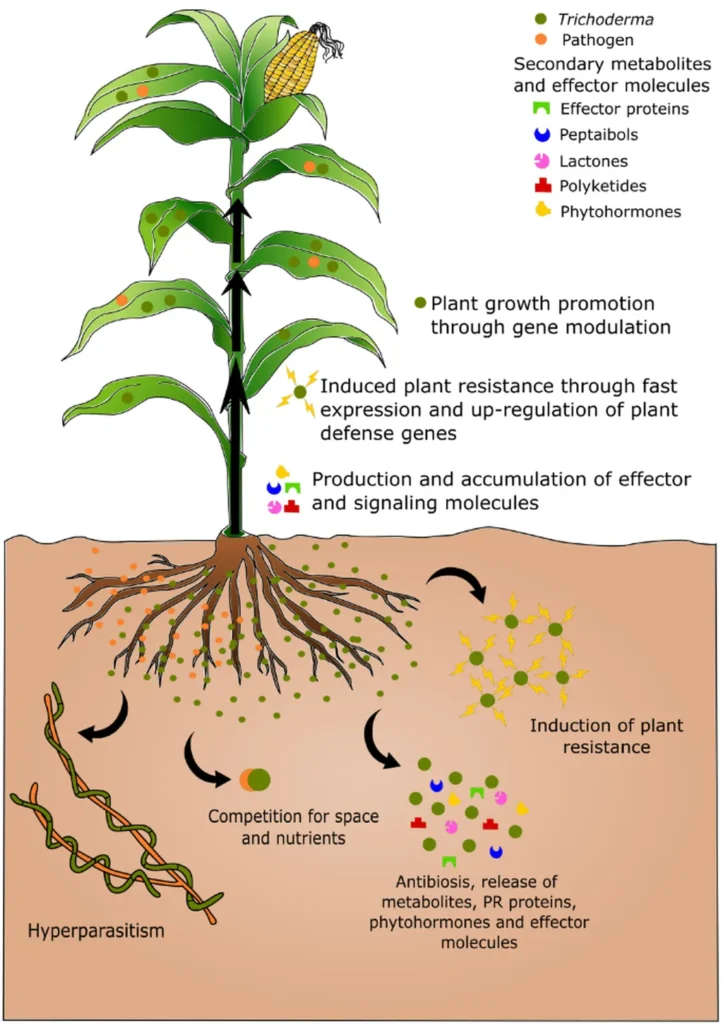In the heart of the world’s coffee and cocoa production, a microscopic ally is gaining recognition for its potential to revolutionize sustainable agriculture. Trichoderma, a genus of fungi, has been the subject of a comprehensive study published in *Frontiers in Microbiology*, shedding light on its multifaceted roles in coffee and cocoa agroecosystems. The research, led by Henry W. Santillan-Culquimboz of the Instituto de Investigación para el Desarrollo Sustentable de Ceja de Selva (INDES-CES) at the Universidad Nacional Toribio Rodríguez de Mendoza de Amazonas in Peru, combines bibliometric and systematic review approaches to provide a holistic view of Trichoderma’s ecological and biotechnological significance.
The study analyzed 266 documents spanning from 1985 to 2025, revealing a steady growth in research publications, with Latin America and the Asia-Pacific region leading the way. Six major thematic clusters emerged, highlighting Trichoderma’s roles in biological control, plant growth promotion, biotechnology, and fungal diversity. “This sustained interest and regional focus underscore the global importance of Trichoderma in tropical agriculture,” Santillan-Culquimboz noted.
Trichoderma’s ecological versatility is one of its most compelling attributes. It colonizes various niches, including the rhizosphere, endosphere, and phyllosphere, and employs mechanisms such as mycoparasitism, antibiosis, nutrient solubilization, and induced systemic resistance to benefit host plants. The systematic review confirmed its effectiveness against key pathogens like Moniliophthora spp., Phytophthora spp., and Hemileia vastatrix, which are significant threats to coffee and cocoa crops.
The commercial implications of these findings are substantial. Coffee and cocoa are strategic tropical crops, and their production is increasingly threatened by climate change, soil degradation, and disease outbreaks. Trichoderma’s ability to enhance plant growth and stress tolerance offers a sustainable solution for farmers. “By integrating Trichoderma into agricultural practices, we can improve crop resilience and reduce the need for chemical inputs, ultimately benefiting both the environment and the bottom line,” Santillan-Culquimboz explained.
Beyond its well-documented roles, the study also identified less explored applications, such as heavy-metal bioremediation, waste bioconversion, mycorrhizal interactions, and entomopathogenic potential. These areas present exciting opportunities for future research and commercial development. For instance, the potential for cadmium remediation in cocoa agroecosystems could address critical environmental and health concerns.
The study also highlighted gaps in current knowledge, particularly regarding strain variability under field conditions. Addressing these gaps will be crucial for optimizing Trichoderma’s use in commercial agriculture. “Understanding how different strains perform in diverse environments will help tailor solutions to specific agricultural challenges,” Santillan-Culquimboz added.
As the agricultural sector seeks sustainable and innovative solutions, Trichoderma stands out as a cornerstone microbial resource. Its multifunctional capabilities position it as a key player in enhancing the resilience and sustainability of coffee and cocoa agroecosystems. The findings of this study not only advance our understanding of Trichoderma’s ecological roles but also pave the way for future developments in sustainable agriculture. By harnessing the power of this remarkable fungus, farmers and researchers can work together to create a more resilient and productive future for tropical crops.

